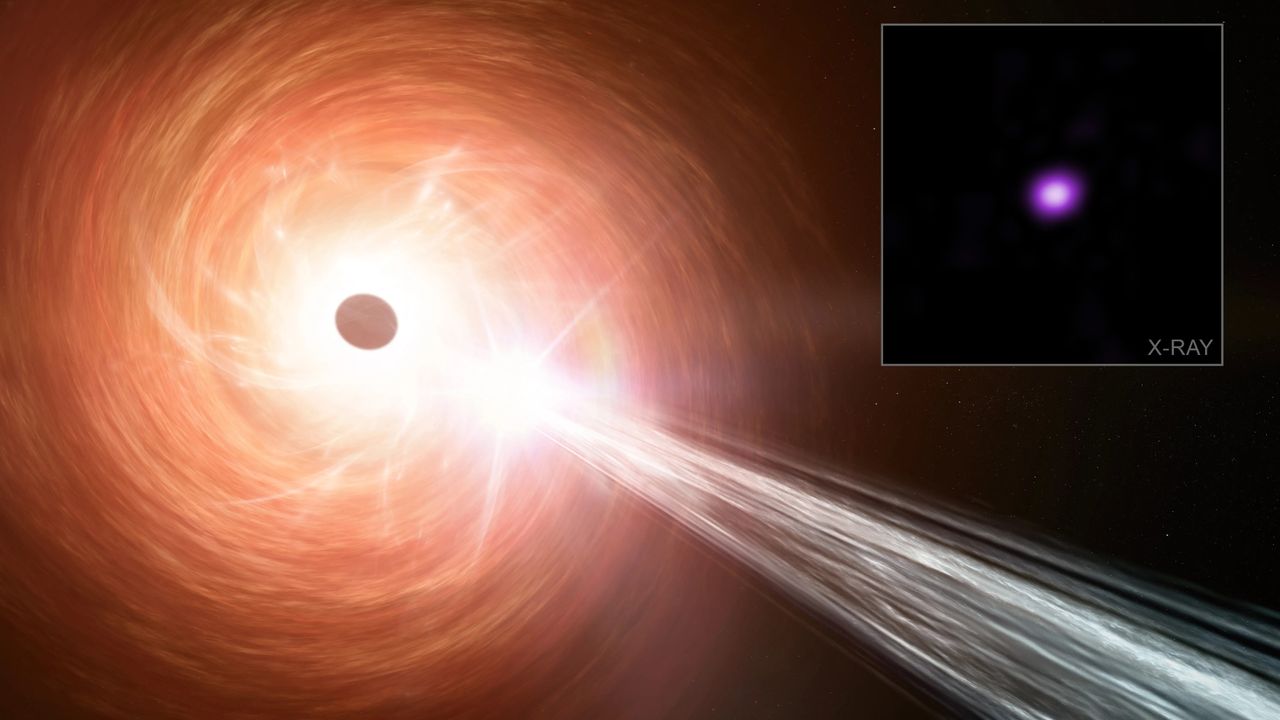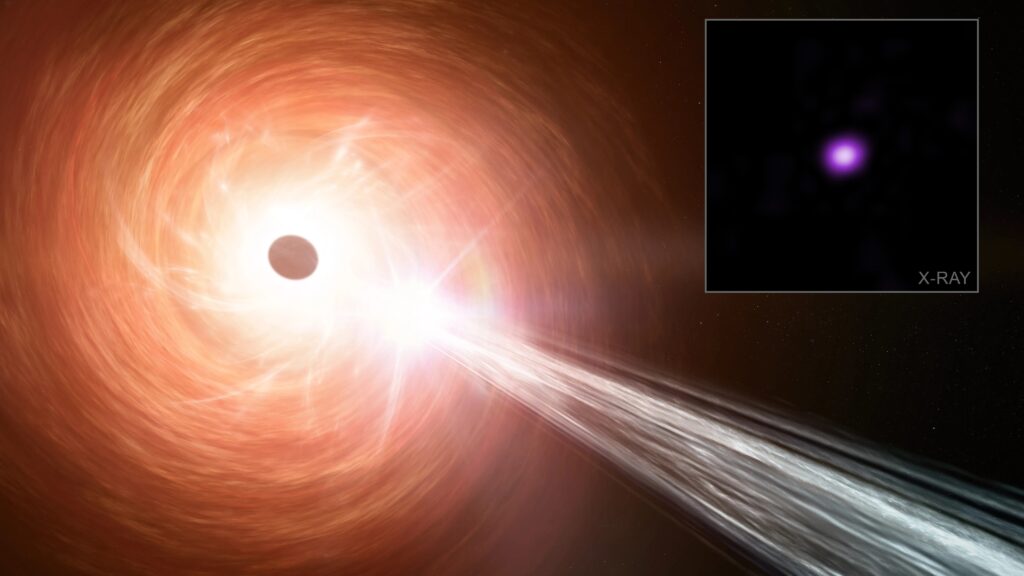
Astronomers have spotted a monster black hole in the early universe that’s gorging on matter at more than twice the theoretical limit. The discovery deepens the mystery of how some black holes born shortly after the Big Bang managed to grow so big, so fast.
Using NASA’s Chandra X-ray Observatory — a powerful X-ray telescope at risk of being terminated by the Trump administration’s proposed 2026 NASA budget — astronomers zoomed in on an ancient black hole called RACS J0320-35, which was born just 920 million years after the Big Bang.
According to a new analysis of the X-ray, infrared and optical radiation pouring out of the black hole, the supermassive monster appears to be growing faster than is theoretically possible, at 2.4 times the Eddington limit — a theoretical ceiling for how fast black holes can grow, based on the relationship between their outward radiation pressure and gravitational pull.
Beyond the limit
Black holes are cosmic objects formed from the collapse of giant stars, which effectively create gravitational sinkholes in space. They grow by merging with other black holes and by gorging on the vast amounts of matter that spill over their event horizon — the point beyond which nothing, not even light, can escape.
Related: ‘Dramatic’ changes spotted in first black hole ever imaged
As the largest black holes draw matter toward them at near light speed, they may form enormous rings of bright light or regurgitate energy into giant, lightsaber-like jets that pierce the cosmos. The brightest of these dyspeptic black holes are called quasars, and they can outshine entire galaxies with their radiation.
That makes quasars ideal targets for astronomers — and RACS J0320-35 is no exception. First discovered in a radio telescope survey before being targeted by Chandra in 2023, the monster black hole’s bright emissions across the electromagnetic spectrum make it a “perfect laboratory” for studying black hole growth, the researchers wrote in the study.
The researchers observed the intensity of X-ray light blasting away from the black hole at different wavelengths, and then compared this to infrared and optical data to estimate the object’s mass and growth rate. They found that the black hole must be growing by 300 to 3,000 suns’ worth of matter every year, putting it beyond the Eddington limit for a black hole of its size. How the black hole can surpass this limit without becoming unstable remains a mystery.
With a sense of the black hole’s growth rate and age, the researchers then worked backward to make assumptions about how the monster originally formed. They found that, given its ultrafast growth, it could have started life as many typical black holes do in the local universe — from the collapse of a large star with a mass less than that of 100 suns.
This finding, along with those of other potential super-Eddington black holes spotted by the James Webb Space Telescope in the early universe, hints that fast-growing black holes may be a more common feature of the ancient cosmos than our models suggest. Rapid eaters like these may also be more likely to emit gargantuan energy jets, as RACS J0320-35 does, the researchers added.
Further research into this black hole and others like it will help researchers unlock the mysteries of the universe’s earliest black holes — namely, where did they come from, and how did they grow so fast?
“How did the universe create the first generation of black holes?” study co-author Thomas Connor, also of the Harvard and Smithsonian Center for Astrophysics, said in the statement. “This remains one of the biggest questions in astrophysics and this one object is helping us chase down the answer.”
